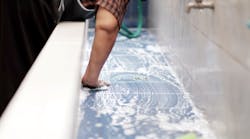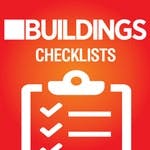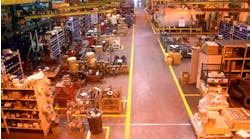Facilities managers at K-12 schools aren’t just responsible for maintaining buildings—they must maintain an environment that’s suitable for learning. It’s a task that can become more challenging when the educational facility transitions from the regular school year to the summer.
Many might imagine a school in the summertime with dark corridors and empty parking lots, but that’s increasingly not the case anymore.
“They don’t fully shut down,” says Trish St. Michael, spokeswoman for the APPA: Leadership in Educational Facilities. “There are other uses and large renovations/repairs that can be delayed occur when classes aren’t in session.”
A Look at Miss Hall’s
It’s likely you and your staff, if employed at a K-12 educational facility, spend part of the summer fixing and polishing up the building—from painting to deep cleaning to repairing. But some facilities, like Miss Hall’s School in Pittsfield, MA, are in use year-round.
Founded in 1898, Miss Hall’s is a private, independent boarding school for girls—with 219 students from 16 states and 20 countries—that spans across 18 buildings on 100 acres. During the school year, it offers a traditional education program. In the summer, it transitions to a home for students of the Tanglewood Music Center, where about 160 co-ed students stay at Miss Hall’s as they study classical music with musicians from the Boston Symphony Orchestra.
Miss Hall’s director of campus services, Robert Aldrich, says careful planning for the transition is key.
“Every school has to deal with deferred maintenance and projects to keep the school up and running and always improving,” he says. “There’s no real down time to do that [here], so it becomes a game of creative scheduling and really excellent planning—making sure we know exactly what we’re going to do and when we’re going to do it, that materials are here so that we can really complete a project in the least amount of time to impact the space. It’s really about taking full advantage of the limited time we have.”
[On topic: Stop Wasting Money on Deferred Maintenance]
Aldrich adds that plans for the June transition begin in January. After decades of serving as a home for Tanglewood, they are “a really well-oiled machine when it comes to [transitioning].”
The process usually involves these two things:
- Negotiating spaces. “What spaces do they want? What spaces do I need to take offline for projects?” explains Aldrich.
- Looking at any differences. Aldrich says each year they look at how the summer program will differ from the year before. “Are they making any changes that will impact their space needs?”
By April, a solid plan is in place, since the month of May is a busy time for Miss Hall’s with end-of-the-year activities and graduation. “It’s, ironically, about six months of planning for an eight-week program,” Aldrich says. But it’s undoubtedly worth it.
Summer Programming
If your educational facility is considering or has recently instated summer programming, you’ll likely notice both benefits and hindrances.
Consider the following four topics when discussing summer transitions:
1. Cost savings
“Obviously there’s a cost to running the buildings all summer,” Aldrich says. “If we didn’t have a summer program, we would certainly see a significant savings on our electricity and other utilities. That’s always something that we’re looking at in terms of, ‘What is our net revenue to any summer program and at what point does it become not worth it?’”
2. Scheduling maintenance
When your school operates year-round, as Aldrich already mentioned, meticulous planning becomes all the more important. Take advantage of what little breaks there are during the year for both traditional and summer students.
BUILDINGS Checklist
Preventive Maintenance
Preserve the integrity of your roofing, lighting, HVAC and plumbing with our preventive checklist. Download yours now >>
For larger projects, staying ahead is key. Make sure any space that’s involved in a project is not scheduled for use during the summer. “An unexpected project is much more difficult,” Aldrich explains. “It really is an issue of planning versus anything else.
3. Empty buildings
Aldrich advocates for a building that does not “sit” all through the summer. An active building during the summer keeps faculty and staff employed. Buildings that sit are prone to problems that can go unnoticed.
“I’d love to have an empty building that I could just run through and paint,” Aldrich says. “But I think I’d also be very bored. What’s nice about our campus is that there’s people on it, there’s students on it, there’s activities, there’s life to it 12 months out of the year. That to me is a good thing.”
4. Space as a commodity
Summer programming, in the case of the partnership between Miss Hall’s and Tanglewood, can be a way to bring in extra revenue. “Space is just such a rare commodity,” Aldrich says. “Any school that sits empty seems like there’s a lost opportunity there… There’s always people looking to rent space during the summer.”
Successfully transitioning your building for a summer program involves mastering the details of planning. In terms of preparing, scheduling and the number of other moving parts, Aldrich says, “It really is an art versus a science.”
Two handpicked articles to read next:




